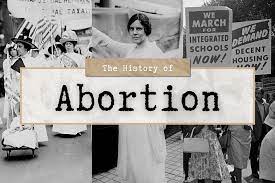Abortion in the Netherlands: Abortion is a highly-debated and polarizing topic, with different countries having different laws and regulations regarding its legality and availability. In the Netherlands, abortion has been legal since 1981.
This post will provide a comprehensive guide to abortion in the Netherlands, including its legal status, the types of abortion available, access to services, and other important information.
The History of Abortion in the Netherlands
The history of abortion in the Netherlands began in the late 19th century when doctors were granted permission to perform abortions on women who had been raped or whose health was at risk.
In 1984, the law was further liberalized, and abortions became available on request up until 22 weeks of pregnancy. This law was updated again in 2012, and now abortions are allowed up to 24 weeks of pregnancy.
The Current Situation
In the Netherlands, abortion has been legal since 1981. However, there are still regulations in place that must be adhered to. For example, abortions must be performed before 22 weeks of pregnancy and only after approval from two medical professionals. Furthermore, women between the ages of 16 and 18 must get permission from a parent or guardian to obtain an abortion.
The Dutch government does provide some funding for abortion services. Those who cannot afford an abortion can still access these services. The Dutch healthcare system also covers post-abortion counseling, which is an integral part of the process for many women.
Abortion is generally accepted in the Netherlands and integral to women’s reproductive rights. This is reflected in the availability of abortion services in most parts of the country. While there is still an intense debate over the issue, overall, it is seen as a necessary right for women.
The Pros and Cons of Abortion
- Abortions can help protect a woman’s health and safety. If the mother’s life is in danger or her health is at risk, an abortion can be a safe and necessary option.
- It is often used as a last resort for women facing difficult and heartbreaking circumstances such as rape or incest.
- Abortions can help reduce poverty by allowing women to plan their families and pursue their dreams.
Cons
1. Abortion can be a traumatic experience for the woman and other people involved.
2. the fetus might feel pain during the procedure, raising ethical issues.
3. Potential risks are associated with the procedure, including infection, heavy bleeding, and emotional distress.
4. Abortions can also create a sense of guilt or regret for the woman and have lasting psychological effects.

